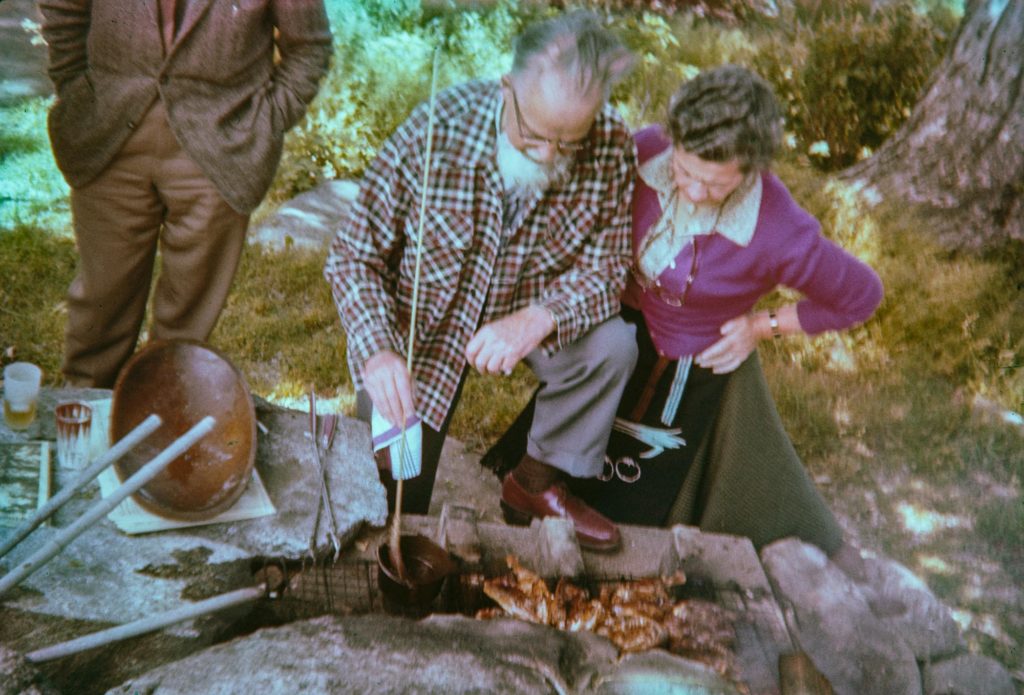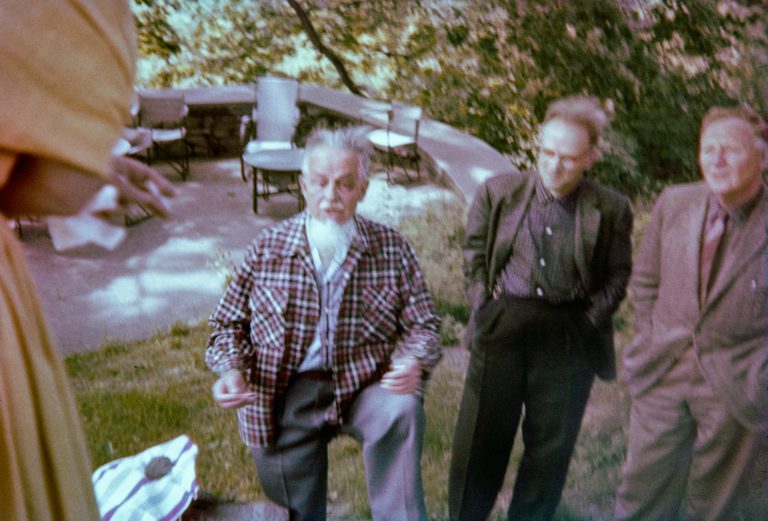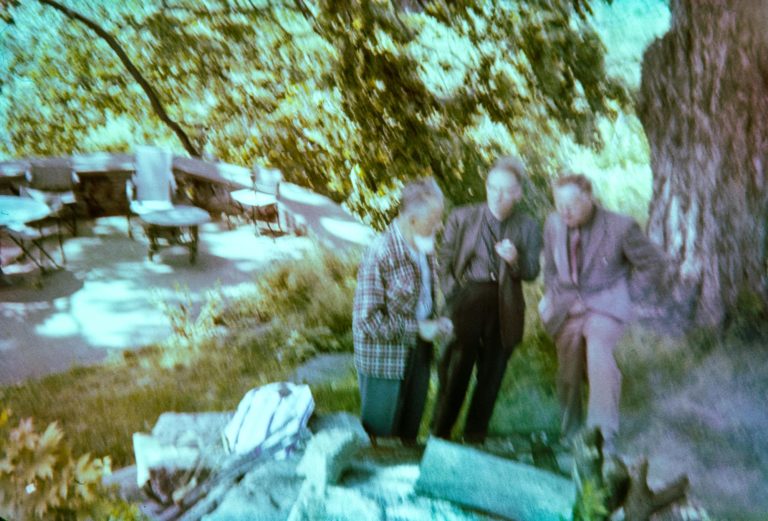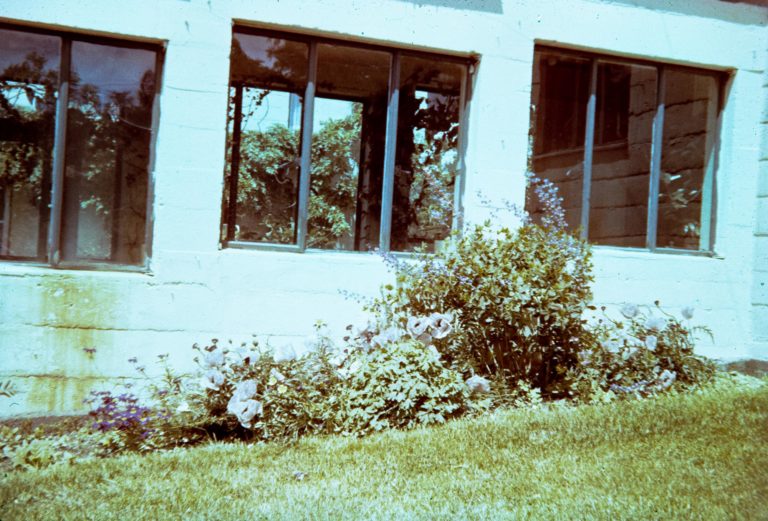Josefine Pola Weinbach Stout, 1902–1984, interior and textile designer.
Rex Todhunter Stout, 1886–1975, “banker, barker, bookworm, bookkeeper, yeoman on the Presidential yacht Mayflower, boss of 3,000 writers of propaganda in World War II, gentleman farmer and dirt farmer, big businessman, cigar salesman, pueblo guide, hotel manager, architect, cabinet maker, pulp and slick magazine writer, propagandist for world government, crow trainer, jumping‐pig trainer, mammoth-pumpkin grower, conversationalist, politician, orator, potted‐plant wizard, gastronome, musical amateur, president of the Author’s Guild, usher, ostler and pamphleteer,”1Johnston, Alva, Alias Nero Wolfe – II, The New Yorker, July 23, 1949, p.30. novelist and creator of detective Nero Wolfe.
Rex Stout’s career was as prodigious as the girth of his most famous creation. A precocious child, he read the bible (twice!) before the age of four. At age 13, he won the Kansas spelling bee championship and entered Topeka High School, where he captained the debate team and was senior class poet.2 Rex Stout, Map of Kansas Literature, He skipped college and served in the navy for two years. Then he tried various cities around the country and assorted occupations, including writing stories for pulp magazines, until 1916, when he both married and devised the Education Thrift Service, a savings program for school children. Within a decade, royalties made him financially independent, allowing him to write in earnest and travel to Europe. His first novel (that had not been initially released in serial form) was How Like A God, published by Vanguard Press, which he had co-founded in 1926 to re-issue left wing classics and publish new works that could not get released elsewhere. The Great Depression quashed his fortune and he turned to mystery writing to earn a living. Nero Wolfe made his first appearance in 1934 and his last in 1975, however literature took a back seat during the Second World War, when Stout threw himself into support for Franklin D. Roosevelt and the war effort. As president of the Author’s League, he took a strong stance against McCarthyism.
In late 1931, while Stout was building his self-designed modernist home, High Meadow, on the Brewster, New York-Danbury, Connecticut boarder, he met Pola Weinbach Hoffmann, who ran an interior design business with her husband Wolfgang. A year later, Stout and Weinbach Hoffmann married in a civil ceremony at High Meadow.
Born in Stryj, then Austria-Hungary, Pola Weinbach began constructing fashions for her dolls as a child. Despite the objections of her parents, she left university in Lemberg to study at the Vienna’s Kunstgewerbe Schule. During her four years there, the Wiener Werkstätte accepted many of her designs. She lived in Paris and then Berlin before marrying the son of her former teacher in Vienna and immigrating to New York.
After her divorce from Wolfgang Hoffmann, Stout returned to textile design, helping to pioneer the revival of weaving in the 1930s. She collaborated with leading fashion houses and created collections for textile companies in Great Britain. In 1940, she headed an eponymous division of Botany Worsted Mills. Stout enjoyed the opportunity to design for a wider segment of society: “I like to make American fabrics for American women.”3 Pope, Virginia, Blends Color Harmonies Into Fine Garment Fabrics, New York Times, March 17, 1940. She used color theory to design fabrics that could be used in combination with each other and manufactured her fabrics for beauty and durability. In 1946, she formed an independent company, Pola Stout Designs/Pola Stout Colors, with its own textile mill in Philadelphia.
Pola Stout often worked from her second floor studio in the expansive home she shared with her husband and two daughters. “While she is spinning yarns in one wing of their hill-top farmhouse, he is spinning his yarns about Nero Wolfe in another.”4Ibid. Ismar David and Hortense Mendel visited Rex and Pola Stout at High Meadow, sometime during the 1950s.






























